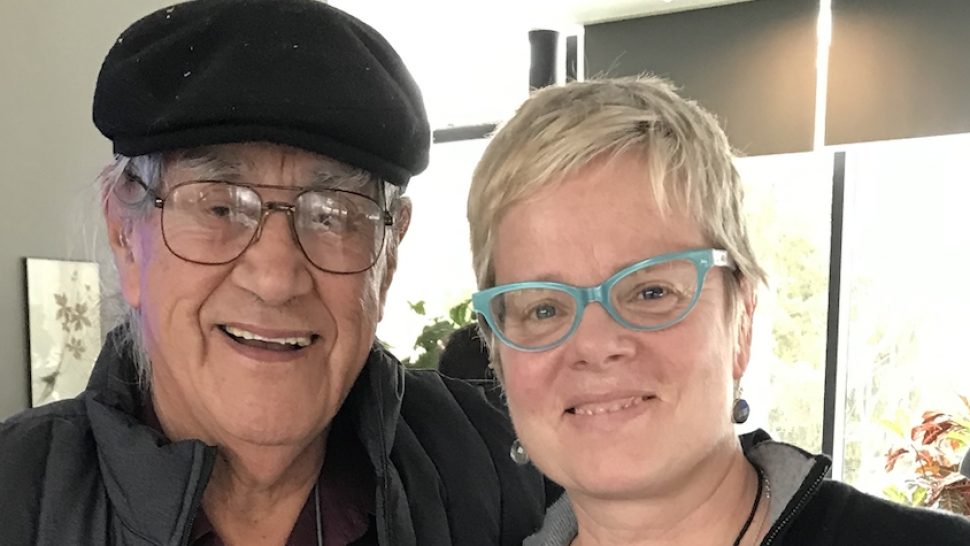
Albert Marshall and Louise Zimanyi at a community consultation at the Humber Centre for Urban Ecology. Ruf photo.
A new children’s picture book called Walking Together that was co-authored by a Humber College professor introduces readers to Etuaptmumk, or Two-Eyed Seeing, which is the gift of multiple perspectives in the Mi’kmaq language.
The book is co-written by Mi’kmaw Elder Albert Marshall from the community of Eskasoni in the Traditional Territory of Mi’kma’ki, Cape Breton; and Humber Early Childhood Education (ECE) Professor Louise Zimanyi, who is of French-Canadian and Hungarian descent living as a guest in Treaty 13 territory. It is illustrated by Emily Kewageshig from Saugeen First Nation. The story follows a group of young children connecting to nature throughout the seasons.
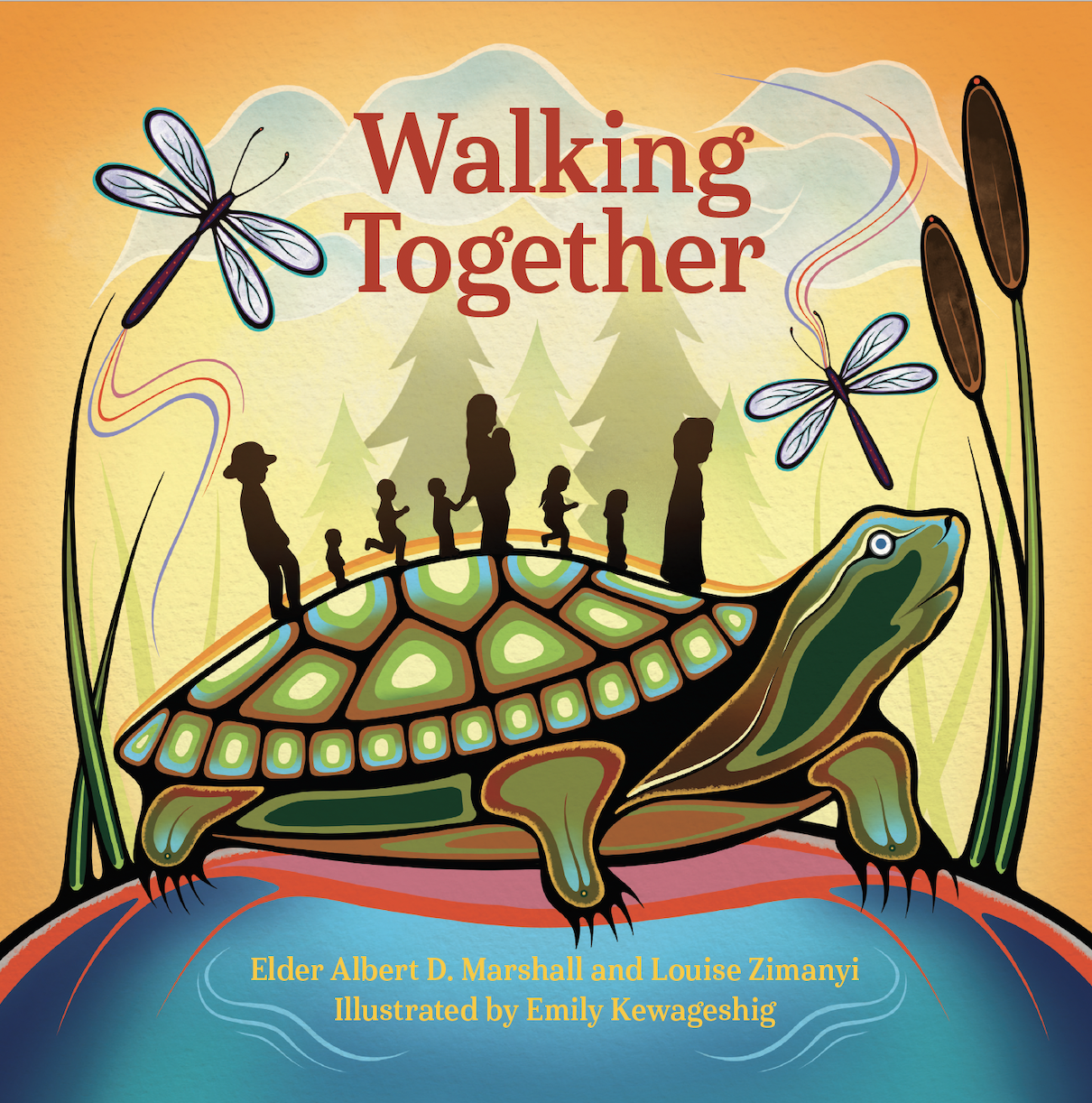
Marshall explains that the book is about learning – by reconnecting to the Land – to see from one eye with the strengths of Indigenous knowledges and ways of knowing, and from the other eye with the strengths of non-Indigenous knowledges and ways of knowing, using both eyes together for the benefit of all.
Since meeting in early 2020, Marshall and Zimanyi have been walking together and co-learning, building on Land-based work at Humber. This includes being part of a Knowledge and Research Collective to co-create, deliver, and evaluate a new course in Humber’s Early Childhood Education (ECE) program.
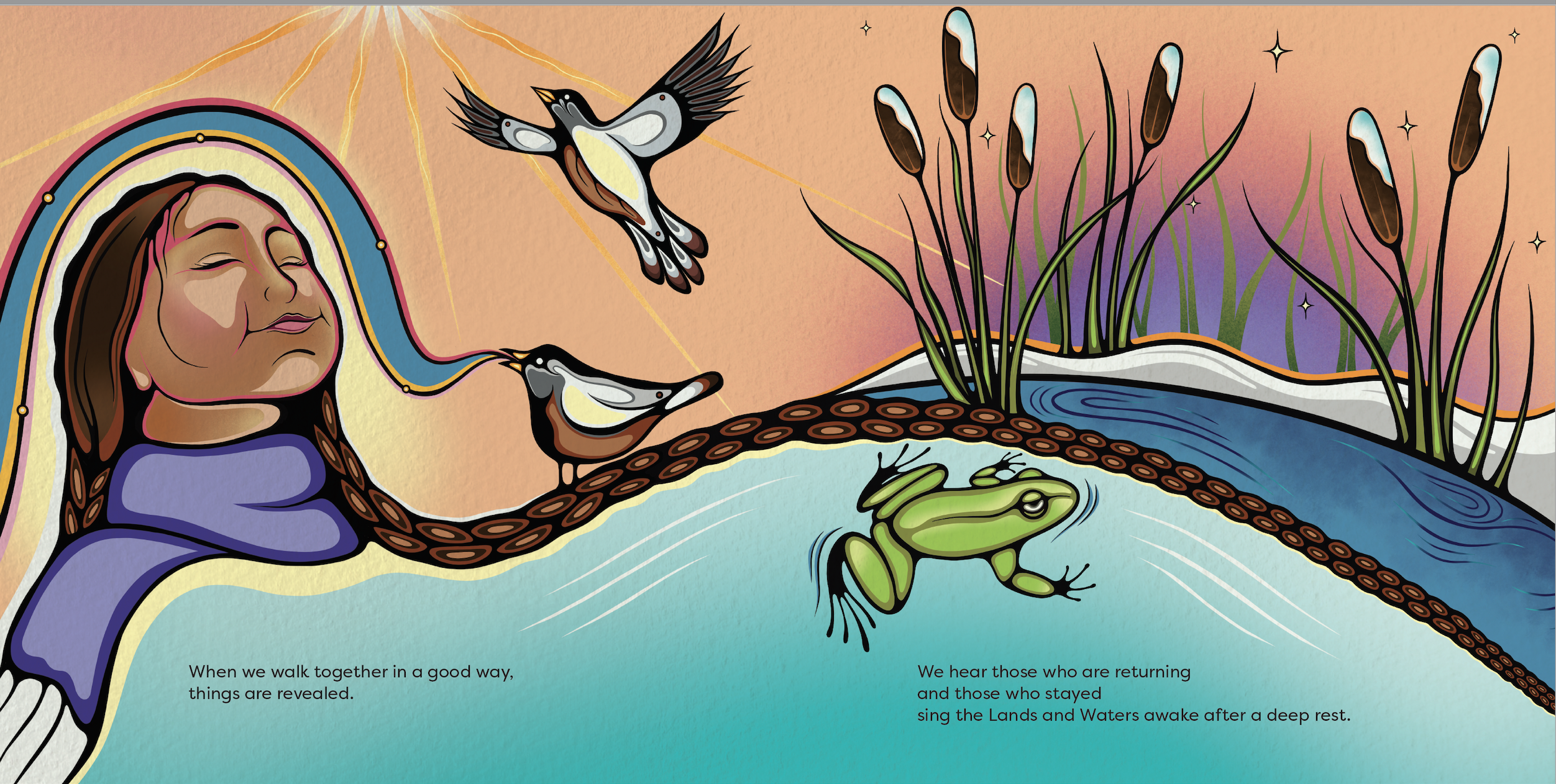
The course is shaped by the traditional territories and lands that Humber is located on, is co-taught by Indigenous and non-Indigenous faculty, and is supported by Humber’s Indigenous Education & Engagement as well as local and regional Indigenous Elders, Knowledge Holders, mentors and storytellers. It engages learners and faculty in respectful, reciprocal, and responsible Land-based relationships and experiences in the Humber Arboretum including storytelling, teachings, co-learning and reflection, in all seasons and weather.
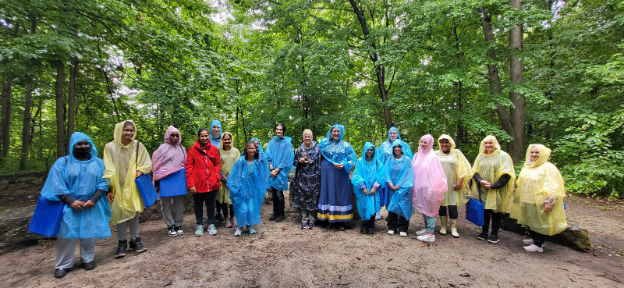
A research study is exploring how the Two-Eyed Land-based Play and Co-Learning course engages the spiritual, emotional, intellectual, and physical realities of learners and faculty and helps action personal and collective responsibilities to all beings.
Co-led by faculty co-teaching the course (see photo below: from left, Lynn Short, Maya-Rose Simon, Louise Zimanyi, Bora Kim, Lyndsay MacKay and Cara Loft) and Maamaawisiiwin Education Research Centre, supported by the Lawson Foundation’s Outdoor Play Strategy 2.0 and Humber Research and Innovation, the study embraces and balances both Indigenous and allied research methodologies and methods. In prioritizing a collective co-led process, all participants are empowered to engage in transformative knowledge co-creation.
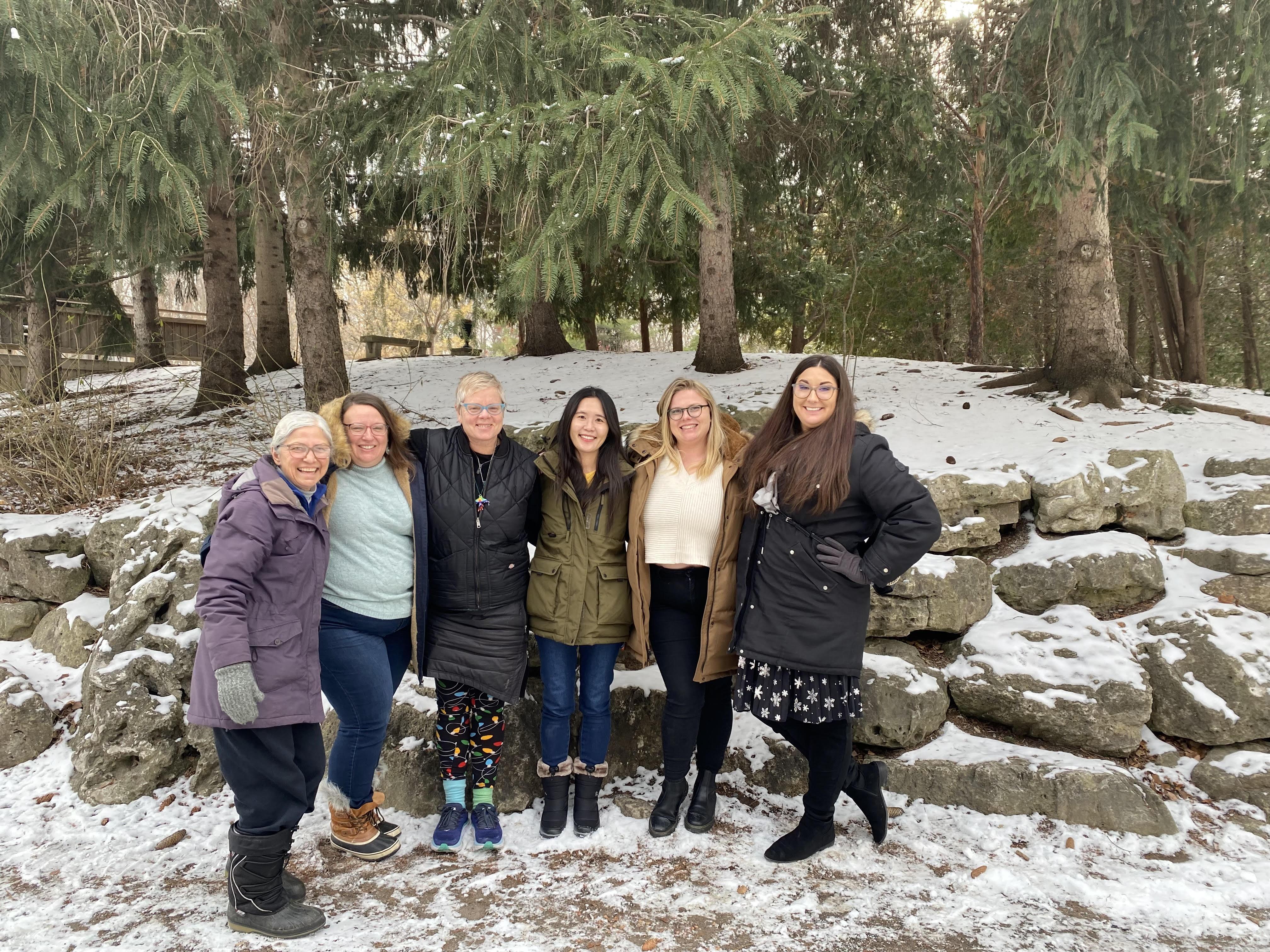
Zimanyi says that initial findings in phase one of the research study show that learners and faculty are more connected to nature through spirit, heart, mind, and body and better understand how worldviews and knowledges can co-exist respectfully for the benefit of all. A final report will be available in June.
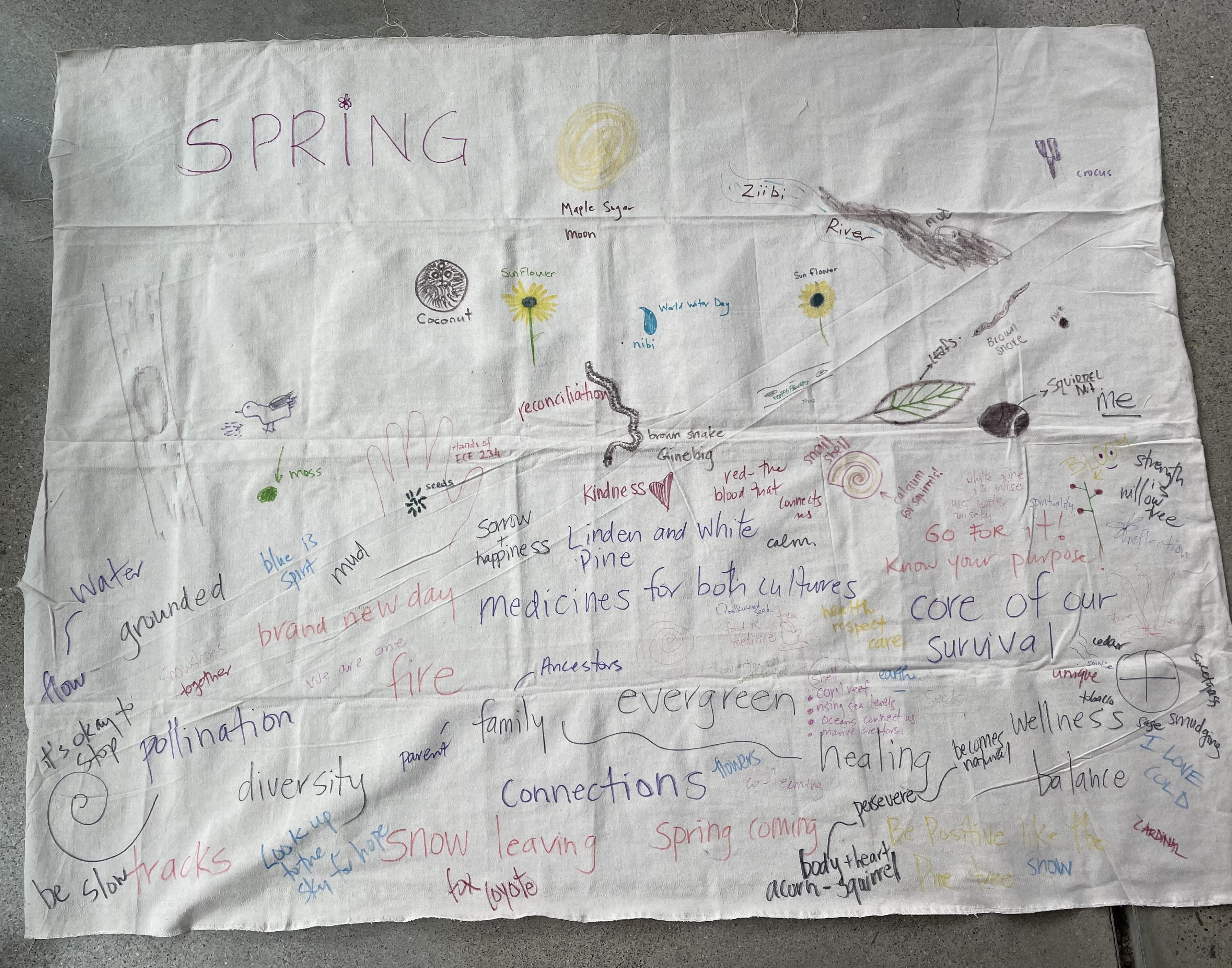
Both Zimanyi and Marshall say that Walking Together can guide practice, pedagogy, and research in outdoor and nature-based play through shared storytelling and contribute to decolonizing post-secondary education in response to the Truth and Reconciliation Calls to Action.